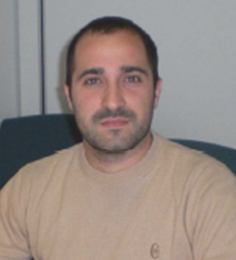Ivan Rivalta
My research activity focuses on application and development of computational tools for fundamental understanding of chemical and photochemical processes in biology and catalysis. Research interests involve a wide range of topics, including gas-phase ion chemistry,1-2 homogeneous and heterogeneous catalysis,3-4natural and artificial photosynthesis,5 and biophysical studies of allosteric systems and visual pigments.6-7 Recently, I focused on the development of computational methods for simulations of ultrafast nonlinear spectroscopies.8-9 A large set of computational tools is routinely employed to perform rigorous studies of complex systems; generally involving a hybrid scheme based on different quantum mechanics (QM) methods (i.e. density functional theory, multiconfigurational and multireference approaches) combined with molecular mechanics (MM). Complex systems dynamics is probed using classical, fully ab initio, or hybrid QM/MM molecular dynamics (MD) and rare events are explored using biased MD techniques, i.e. metadynamics. The research work involves strong collaboration with experimental groups, aiming at a rigorous interpretation of experimental evidences and at the design of novel experiments to track structure, dynamics and reactivity of chemical systems.

Selected publications:
- Rivalta I., Russo N., Sicilia E. "Methane activation by chromium oxide cations in the gas phase. A theoretical study". Journal of Computational Chemistry, 2006, 27, 174-187. (link)
- Michelini M. D. C., Rivalta I., Russo N., Sicilia E. "Two State Reactivity Paradigm in Catalysis. The Example of X-H (X=O, N, C) and C-C Bonds Activation Mediated by Transition Metal Compounds", Computational Modeling for Homogeneous and Enzymatic Catalysis. Morokuma K., Musaev D. G. , Eds. (Wiley-VCH. 2008) chap. 15, 337-366. (link)
- Chowdhury S., Rivalta I., Russo N., Sicilia E. "Theoretical investigation of the mechanism of acidcatalyzed oxygenation of a Pd(II)-Hydride to produce a Pd(II)-Hydroperoxide". Journal of Chemical Theory and Computation, 2008, 4, 1283-1292. (link)
- Mazzone G., Rivalta I., Russo N., Sicilia E. "The geometric effect in palladium-gold catalysis. Is the coupling the rate-determining step in the vinyl acetate synthesis?". Chemical Communications, 2009, 14, 1852-1854. (link)
- Rivalta I., Brudvig G.W., Batista V.S. "Oxomanganese complexes for natural and artificial photosynthesis". Current Opinion in Chemical Biology, 2012, 16, 11-18 (link)
- Sekharan S., Mooney V.L., Rivalta I., Kazmi M.A., Neitz M., Neitz J., Sakmar, T.P., Yan E.C.Y., Batista V.S. "Spectral Tuning of Ultraviolet Cone Pigments: An Interhelical Lock Mechanism" Journal of the American Chemical Society, 2013, 135, 19064-19067. (link)
- Rivalta I., Sultan M.M., Lee N.-S., Manley G., Loria J.P., Batista V.S. "Allosteric Pathways in the Imidazole Glycerol Phosphate Synthase" Proceedings of the National Academy of Sciences, 2012, 109, E1428-1436 (link)
- Rivalta I., Nenov A., Weingart, O., Cerullo G., Garavelli M., Mukamel S. "Modelling Time-Resolved Two-Dimensional Electronic Spectroscopy of the Primary Photoisomerization Event in Rhodopsin", Journal of Physical Chemistry B 2014, in press (link)
- Nenov A., Rivalta I., Cerullo G., Mukamel S., Garavelli M. "Disentangling Peptide Configurations via Two-Dimensional Electronic Spectroscopy: Ab Initio Simulations Beyond the Frenkel Exciton Hamiltonian".Journal of Physical Chemistry Letters 2014, 5, 767–771. (link)



